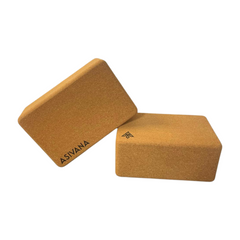What is Hatha Yoga?
Jack UtermoehlShare
Hatha yoga is the foundation of many modern yoga styles, emphasizing balance through asanas (postures), pranayama (breath control), and meditation.
Known for its gentle yet structured approach, hatha yoga focuses on breath awareness, controlled movement, and longer posture holds, making it ideal for beginners and those seeking a mindful practice.
Origins of Hatha Yoga
Hatha yoga dates back to 1st century CE, with references in Hindu and Buddhist texts. It evolved into a formal system around the 11th century, influenced by Tantric and Nath traditions.
Early hatha yoga masters, such as Matsyendranatha and Gorakhnath, integrated philosophy, physical postures, and breathwork to create a holistic path toward self-discipline and spiritual awakening.
Hatha Yoga Practice
Hatha yoga balances body and mind through physical movement and controlled breathing, preparing practitioners for deeper meditation.
Common Poses
Mountain Pose (Tadasana), Downward Facing Dog (Adho Mukha Svanasana), Warrior II (Virabhadrasana II), Child’s Pose (Balasana)
Hatha Yoga Suitability
Experience Level: Mixed Level (Suitable for All)
Physical Demand: Relaxation-Focused to Balanced Activity
Mind-Body Engagement: Mindful & Gentle
Adaptability: Highly Adaptable
Focus Area: Flexibility & Balance to Comprehensive Fitness
Notes on Hatha Yoga
Hatha yoga improves flexibility, builds strength, and enhances mental clarity. It is widely practiced for stress relief, better posture, and improved focus.
Similar Styles
Anusara Yoga, Iyengar Yoga, Bikram Yoga, Gentle Yoga, Restorative Yoga, Sivananda Yoga, Vinyasa Yoga
Equipment
Required: Yoga Mat
Nice to Have: Yoga Blocks, Yoga Strap
Optional: Bolster, Yoga Blanket, Eye Pillow
Yoga Essentials for Your Practice
Support your yoga journey with high-quality, sustainable props designed for comfort and stability.

Crafted from eco-friendly cork for durability and a comfortable practice.
$24
Shop Now
Includes everything you need to get started: a mat, blocks, and a yoga strap.
$120
Shop NowReferences
‘Hatha Yoga Pradipika’ by Swami Muktibodhananda
‘Light on Yoga’ by B.K.S. Iyengar
‘The Heart of Yoga’ by T.K.V. Desikachar
‘The Complete Yoga Book’ by James Hewitt
‘The Yoga Bible’ by Christina Brown






